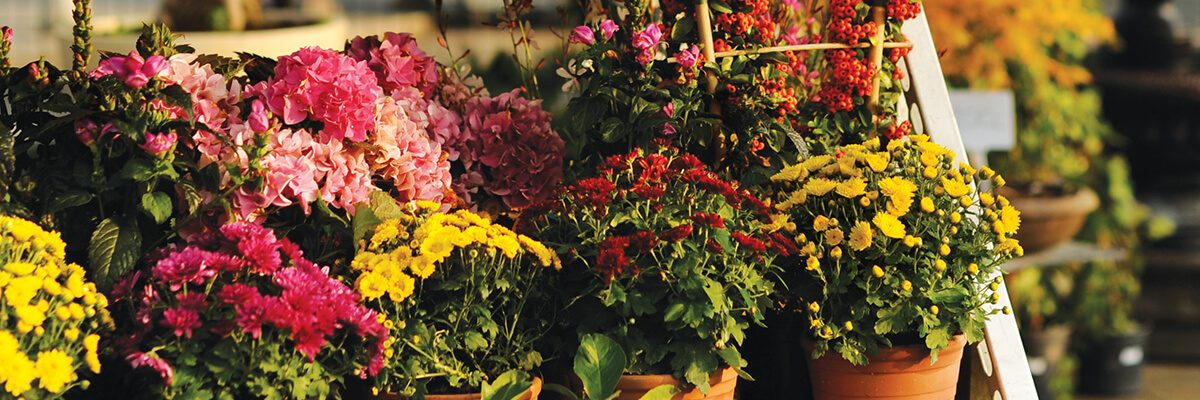The most important thing you need to perform before autumn garden care is to enjoy your garden before winter. Prepare to say hello to a cooler and rainy weather with September as the hot weather falls behind. Of course, do not forget to prepare the plants in your garden for this new season!
- Prepare your garden for winter.
The most important thing to perform during autumn garden maintenance is to increase the resistance of plants and grass and prepare them for winter. Continue spraying and fertilizing programs during these months - Take care of and maintain your garden.
Your priority should be the removal of seedlings from the summer and the cultivation of the soil for new planting. Let the soil rest for one week, hoe and plant new seedlings after the seedlings have been removed. - Make Room for plants.
If there are new plants to be placed in the garden, you can locate them and prepare their places. Soil will be processed more easily with the rain. During the autumn garden care, ventilate the soil and make room for new plants. - Check the sub-structure.
If new turf is to be built, re-install infrastructure applications such as drainage, irrigation system, or have optional repair / check - Pesticide and fertilization.
The pesticide and fertilization activities should be continued according to plant needs - Continue irrigation.
In September and October, do not interrupt irrigation with rainfall. The amount of precipitation may not be sufficient to meet the needs of plants. Therefore you may reduce irrigation but do not entirely stop it. - Doing reasonable food support.
All plants will have new growts/shoots before winter and these shoots will continue to grow over a 2-month period. Therefore, it is necessary to make nutritional supplements according to the needs of plants prepared for winter. Fertilization should be done according to the needs of plants or grass. This process also increases the nutritional value of your soil. Since plenty of water is required for fertilizer to enter the soil, we recommend fertilizing on a rainy day. If rainfall is not enough, you will as well need to irrigate. - Autumn is the most suitable period to dibble.
Do not forget to plant new seedlings in your garden. If you have surface pruning that is missing during these months, it is time. You can plant the bulbs of the bulbous plants that bloom in spring. - Complete your missing equipment.
The process that will distract you the most will be to collect the dried leaves regularly other than all this. To this end, you can use leaf pickers or the traditional rake or range.
Vegetable garden preparation during the autumn garden maintenance
If you say “it would be nice to have some vegetables too in my garden in the fall season”, you can start preparing for the autumn vegetable garden.
During the autumn garden care period, take a look at your garden, set a place for yourself depending on the size of your garden, but make sure that it is sunny and not affected by the wind. It is useful to surround the vegetable garden. For this fence plants, plastic, wooden fences, bamboo fences can be used.
First of all, start by hoeing the soil. You can then plant seeds or seedlings. First of all, you should be surprised by sowing the seeds in a different area. Seeds should be planted in the garden after germination and height. This makes the seedlings more healthy and durable.
You can plant cabbage, cauliflower, cress, arugula, lettuce, parsley during this period.
Use organic fertilizers when you are fertilizing.
Vegetables need regular watering. Irrigation should be done by controlling the amount of moisture in the soil when it is not rainy.
You can even grow your vegetables on the balcony if you wish. Don’t forget to take a look at our article (Balkonda sebze bahçesi) vegetable garden on the balcony.
The outdoor ornamental plants have become an important landscape work with rapid urbanization. First of all, the recognition of a natural plant environment should be chosen according to the ecological requirements of the landscape plants to be used and the place where the application will be made when working in any field.
Plants to be used
Plants to be used as landscaping plants are as follows;
1) Trees and Small Trees: The plants with large stems and woody structure are 7-15 meters long and more, trees are plants with 3-7 meters narrow and woody stems. The landscaping plants are the longest and dominant plants and are the leading plants in terms of aesthetics, measurements and shape values in the arrangements made in accordance with the most basic principles of architecture.
2) Shrubs: Perennial plant species that can grow from 15-20 cm up to 3-5 meters and have a few stems from the ground. Like small trees, they have the trunks, branches, leaves, hill and roots. Shrub forum plants play a complementary role in landscaping. The importance of shrubs increases as the scale decreases in environmental regulation. It is used to disrupt the monotone structure of the ground where the arrangement is made and creates fluctuations in the ground.
3) Climber and hugging plants: With thin and long stems, crawler, large-leafed walls and camellias and trees are growing perennial or blossoming plants growing perennial or flowerless. It is gathered under two groups, which are constantly green and shed leaves in winter. These plants, which grow by spreading or hanging down in unsupported environments, form perfect images on small pieces of soil.
4) Ground Covering Plants: The plants that are tightly spread on the short and short ground are referred to as Ground Covering Plants. The stems of these plants spread along the ground and take root. Clusters of green or blossoming groundcover placed on the courtyard or terrace create a connection between the lawns and the two environments. It is a type of plant used to provide emphasis especially in confined spaces. Groundcovers of different colors, characters and textures form a border or ribbon when planting along a row of flowers or on the edge of a bush. They prevent erosion in a short time if they are used in places that are inclined and where landslides may occur.
5) Seasonal Flowers: Seasonal flowers are used to fill an empty vegetation with colorful plants. It also contributes to the fact that the areas covered with perennial plants are more attractive and colorful and add color to the basic vegetation. These plant species, which are usually produced by seed, are used in gardens, balconies, parks and gardens. They can stay in flowers for months during their lives. Seasonal flowers such as pansies in this type of plants are used to welcome the winter in autumn and welcome the spring in the end of winter.
6) Bulbous Plants: In general, this plant group is divided into three groups, which bloom in spring, bloom in summer and bloom in spring and summer. These plants are usually planted in gardens and parks. They can also be used as cut flowers or pot plants.
7) Grass Crops: Stunted and short plants spreading firmly on the ground. They are most commonly used as Ground Covering Plants. By spreading and taking root along the ground, it covers the whole soil with a green cover. Different kinds of grass mixes and species are used in order to perform many functions in establishing green areas.








